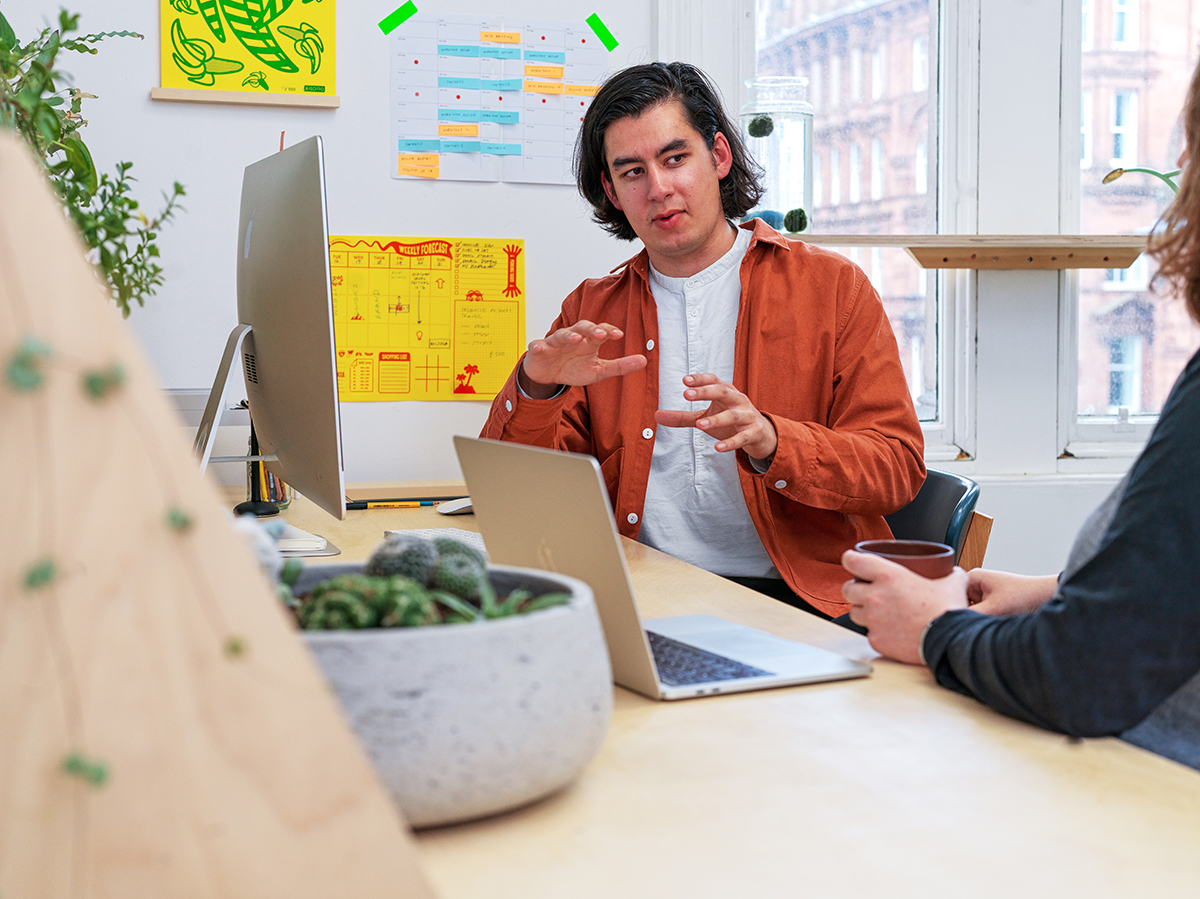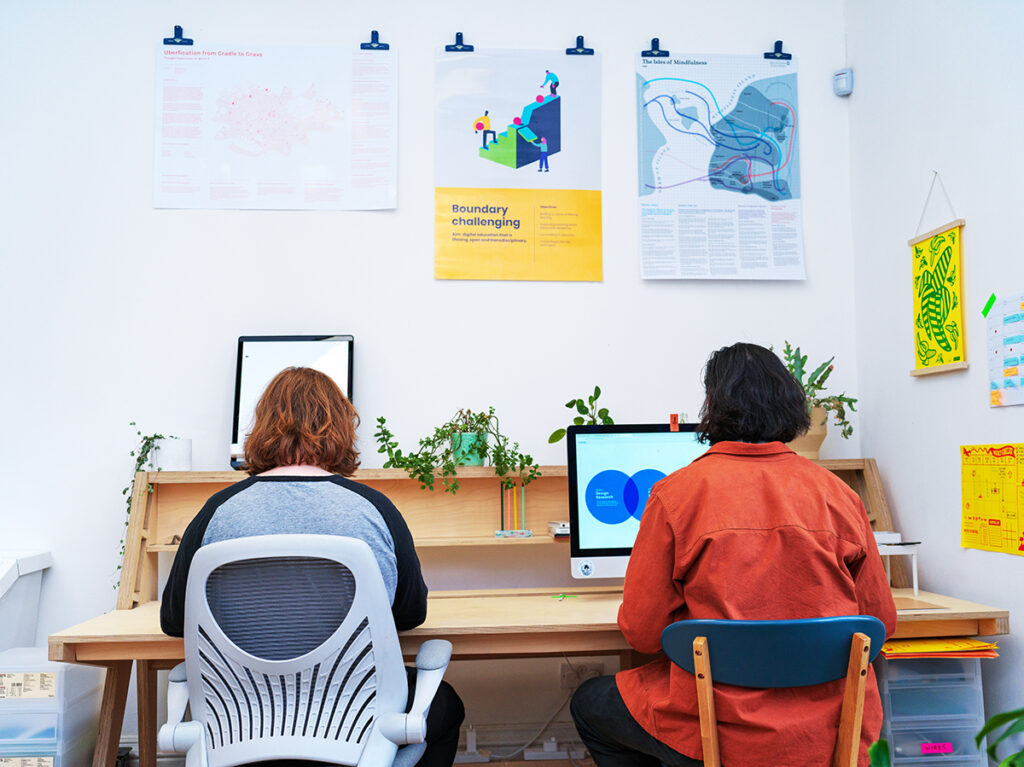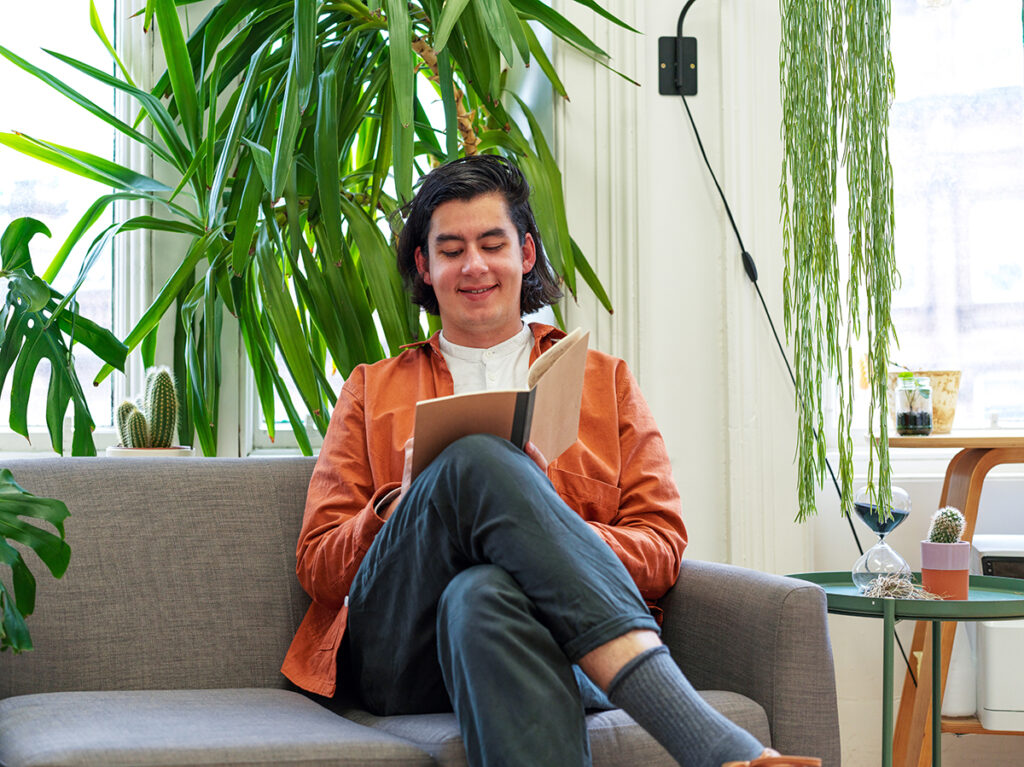
Santini Basra, the design strategist anticipating the future

Meet Santini Basra, founder of Studio Andthen
Andthen is a design strategy studio. “What that really means, is that we go and help all sorts of companies with the early stages of designing something – and that something is a really broad word” explains Santini, founder of Andthen. It might be a physical product, or something more intangible, like a service, experience, or a new way of working or learning.
The magic happens when Santini and his team blend two different fields, one being design research – essentially talking to people and helping to understand their needs now – and the other one being futures research – researching how the context that the business is operating in, or the people they’re serving, might change over time.
“Sci-fi is a really good medium to tell stories about the future, that make us reflect on how we do things today. And design also has the ability to do that.”
When he decided to set up the consultancy, Santini explains, “There were a few experimental designers doing stuff in the design and futures space, and trying to blend those two things together, but I didn’t know of anyone who had done it commercially.”
“That was the really big challenge – communicating the value of what we did and even labelling it” explains Santini. Three years on, the value has evidently shone through with their impressive client list and portfolio.
“Sadly most of the work we do we can’t talk about, which is actually really annoying!” he says. One project he can spill the beans on was for Mindfulness Everywhere; a family-run company that create meditation apps, a growing sector, which includes the likes of Silicon Valley-backed giant, Headspace.
“They’re really concerned about how the current wave of mindfulness apps is affecting the way we understand meditation ” explains Santini. “A whole generation of people are going to grow up thinking meditation is something you do on your own with a phone.” This led Andthen to explore opportunities for social meditation experiences. “The research part was really cool” he adds. “It’s quite fun to end up in a flotation tank and be like, ‘This is my job.’”
Unlike many entrepreneurs, Santini’s dream wasn’t to run his own business. “I’ve always actually had a lot of respect for people who work in really good teams and people who have really inspirational leaders or bosses” he explains. Upon returning to Glasgow after a stint at a design studio in Amsterdam, Santini said “I think the business thing was just the right place right time.”

Today, Andthen has a core team of four, and a broader team of associates. The consultancy’s commitment to design futures runs deep, and all associates are given a budget every six months to fund their own side projects. “The rule is that we don’t veto anything” explains Santini.
“Find someone who is really good at what you do and get them to be a mentor.”
We all know that we should play to our strengths. But when you’ve got to wear multiple hats – the unwritten rule of starting a business – you’re often forced to face your weaknesses head-on. Santini admits “I’m good at design. I’m good at strategy. But I’m not really good at running a business or motivating a team or managing projects.” Luckily, he found a mentor who is. “I only meet him a few times a year, but it’s just insane how much I take away from like a lunch with him! Find someone who is really good at what you do and get them to be a mentor.”
From their sources of inspiration to ways of working, collaboration is deeply rooted in Andthen’s culture. “I actually feel these days that design leaders aren’t actually that relevant anymore” reveals Santini. 20 years ago, design superstars had their whole studio and products under their own name. “And these days, I feel due to the complexity of the challenges that designers are working on, it’s never one person. It’s always a team of people” he adds.
“The thing that really excites me is, instead of a particular project or a particular person, just seeing how a series of designs or design futures efforts can shift the mindset of a group of people, and make them start to think about a problem in a different way,” says Santini.

Interestingly, Santini came across Tide in an unusual way. “I was actually doing research for a startup bank, who asked me to look at all its fintech competitors,” he says. “I also needed a business bank account at the same time, so I signed up as part of this research and I kept using Tide, because it’s actually really useful.”
Before joining Tide, Santini was with a traditional bank, but it wasn’t suited to his on-the-go business needs. Bizarrely he couldn’t use the app, because his personal account was with the same bank: “It just sees your personal and business accounts as the same thing. The app won’t allow you to have two accounts” he sighs. “I think one thing that Tide’s good at that others aren’t is managing your finances on the move.”
Talking of multiple accounts, one of our app’s features that has made Santini’s life easier is our additional accounts, which let you ‘split up’ your primary account. “I can put all VAT that I owe in one account. I can put all the money that is reserved for our associates in another account and stuff like that.”
Much like Andthen, we’re committed to anticipating and evolving with our customers needs, and we’re continuously working on new features. “The Xero integration has been an absolute game-changer” he points out.
If you’ve got a rough idea and believe there’s an interesting opportunity or a problem to be solved, check out Andthen’s website.


